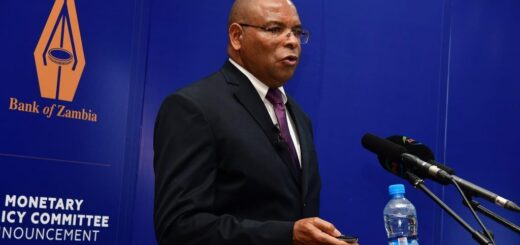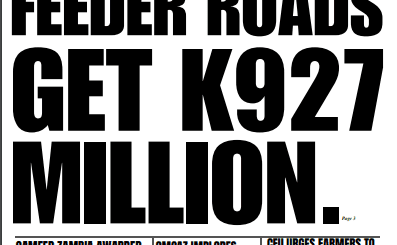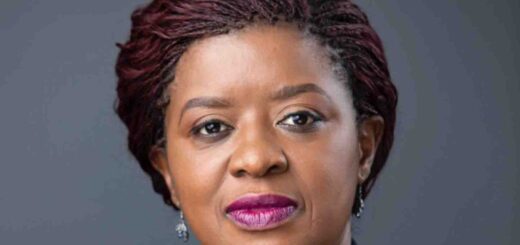The Chaos Of Poor Planing That Is The Great East Road
The Lusaka Urban Decongestion Project was heralded as the solution to our city’s chronic traffic jams. Roads were upgraded, new bypasses constructed, and traffic was expected to flow freely, as the burden on major arteries was set to ease.
Among the most notable developments were the improvements on the Great East Road (GER), Kamloops, Munali, and the 70-70 bypass. Yet despite the initial improvements, Great East Road, one of Lusaka’s key corridors, remains a mess – not because of the volume of traffic, but due to astoundingly poor planning decisions that have created avoidable and unnecessary bottlenecks.
The segment of Great East Road stretching from town to Munali Roundabout demonstrates what good planning can achieve. The east and westbound lanes flow smoothly, and for a moment, it seems that the decongestion project has achieved its goal.
However, this façade of progress collapses the moment you leave the Munali flyover bridge and enter the section of Great East Road beyond Munali leading to the Hybrid Roundabout.
Here, traffic becomes a daily nightmare. Buses, which are meant to service commuters efficiently, turn into a plague on the road as they occupy entire lanes, often stretching over both the east and westbound sides.
The bus station at the Hybrid Roundabout is nothing short of a travesty. Whoever is responsible for its placement should be held accountable for the frustration and delays it has caused to countless motorists. It’s a perfect example of poor planning where basic foresight could have easily prevented the chaos.
At any given moment, the two lanes of GER are reduced to one. Buses pile up, with no proper space allocated for them to pull over. The problem is further exacerbated during peak morning and evening hours, when the traffic volume is at its highest.
This is not just an inconvenience; it is an example of urban planning failure of the highest order. There is plenty of space on the northern side of the road that could have been utilized to create a dedicated bus stop. Yet, inexplicably, nothing was done.
Instead of allowing buses to freely clog the main lanes, a third lane should have been constructed specifically for buses, allowing them to stop and pick up passengers without disrupting the general flow of traffic. A concrete barrier or embankment could have been erected to prevent buses from blocking the main road altogether.
The lack of such simple solutions raises serious questions about the competence of those tasked with urban planning in Lusaka.
The same issue persists on the westbound side. The side road from Simon Mwansa Kapwepwe that terminates at Gardenia should have been extended all the way to the roundabout.
This would have allowed traffic heading into Avondale and Salama Park to bypass the bottleneck that has formed at Gardenia.
Again, this is not a difficult solution to conceive, yet it remains ignored, much to the detriment of the daily lives of Lusaka’s residents.
As if that weren’t enough, it has come to light that a fuel station has been constructed on the road reserve bordering NRDC and Gardenia Junction.
This is yet another example of poor planning and a complete disregard for the city’s long-term needs. Road reserves are meant to accommodate future expansions or alternative routes, not private developments that choke an already struggling road network.
Why do we continuously create our own problems? Why do we punish ourselves with bad decisions that make life harder for everyone?
It’s almost as if we actively resist progress. We have the resources and space to build proper infrastructure, yet time and again, we settle for half-baked solutions that leave the city in chaos.
The placement of the Hybrid Roundabout Bus Station and the lack of proper bus lanes is one of the most avoidable traffic disasters in recent memory.
A small adjustment – reallocating the bus station and building a third lane – would alleviate so much of the congestion. Yet, here we are, stuck in the same traffic jams we sought to eliminate with the Lusaka Urban Decongestion Project.
Our city is not large. Lusaka is modest in size compared to major cities around the world. Yet we have managed to make it feel insurmountable due to our sheer incompetence in planning.
Take, for example, the absurd route a person must take when traveling from Chelstone to UTH. You are forced to first head into the city center before redirecting to your destination. In any well-planned city, this type of circuitous routing would be unheard of. But in Lusaka, it is a daily reality.
We need to wake up. We need to recognize that bad planning costs more than time and frustration; it costs money, fuel, and contributes to the degradation of the environment as cars sit idling in traffic.
The Hybrid Roundabout is an urgent issue that demands attention. The road network here must be redesigned immediately, and bus stops must be placed where they belong – off the main road, out of the way of regular traffic.
We can and must do better. Lusaka is a growing city with enormous potential, but unless we fix these basic planning issues, we will remain trapped in the gridlock of our own making.
The Hybrid Roundabout should be the first area to be reexamined, but it shouldn’t be the last. Our city deserves smarter planning and forward-thinking strategies, not the backward, self-inflicted chaos we have now.








